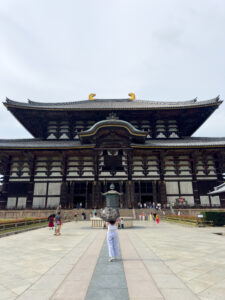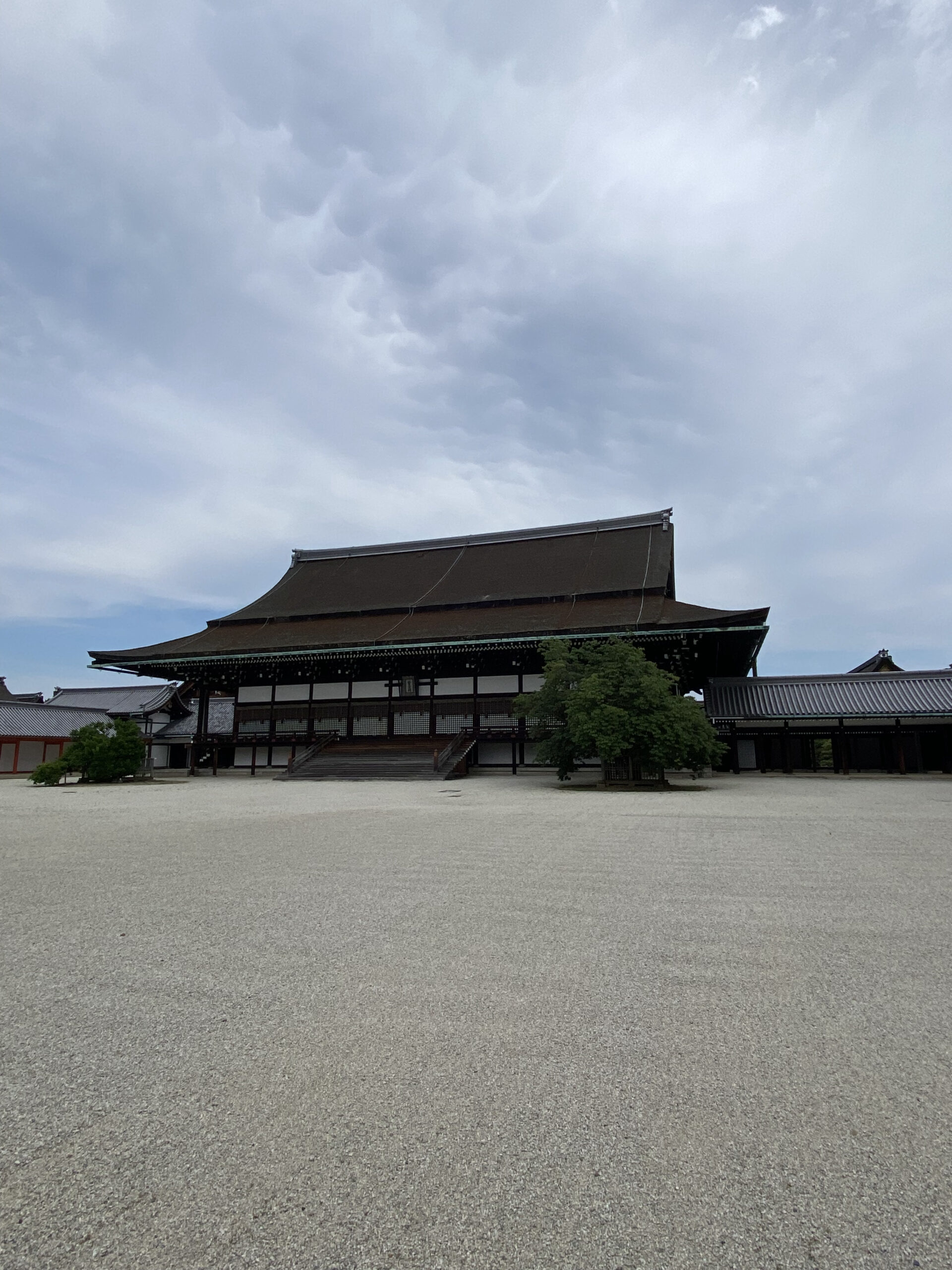
During SJMC Japan, students had a chance to experience the Kyoto Imperial Palace first-hand.
Located in a secluded public park today, the palace has served ashome to many emperors throughout the centuries.
The tall walls surrounding the palace grounds served as barriers against invasion and have stood for 500 years. As we were guided through the palace, we learned about the significance of each building in the palace complex and came to realize that the emperor didn’t just live in all of these buildings nor does he sit around not doing anything. In fact, we learned that the emperor only stayed in one home and worked extensively for his people, family and the palace as well.
If you have a deep passion for Japanese history and want to visit the Kyoto Imperial Palace, then here are some things you should know before you visit.
The paintings on display
As we walked around, we noticed that each home contained some sort of wall painting whether it was ta tiger or a painting of the village. One wall painting that caught the eyes of many students was “Sakura-no-ma” (Room of Cherry Blossoms) painted by Hara Zaisho (1813-1872). At the time of Imperial Japan, the Sakura-no-ma represented traditional Japanese art as well as heritage since the cherry blossoms in Japanese culture represent life and beauty.
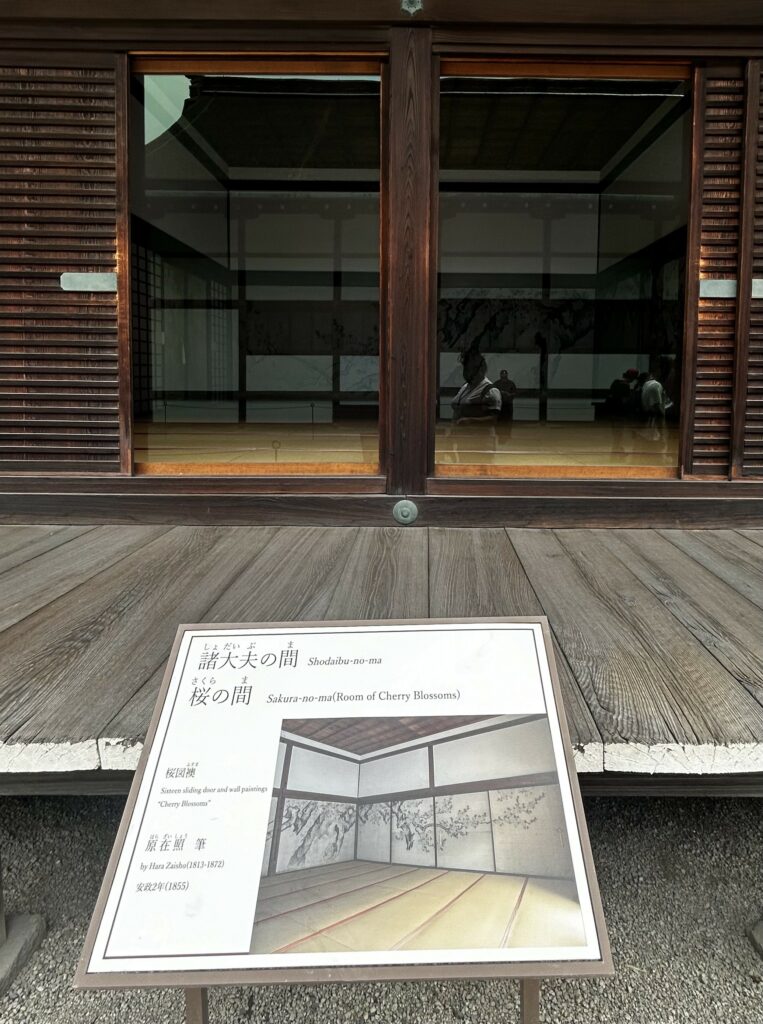
During our tour of the palace, we stumbled upon a place which was known as the “Shinmikurumayose” (New Carriage Porch). The carriage porch was newly built in 1915 for former Emperor Taisho (1879-1926). This porch was used for the emperor to make an entrance and exit on a carriage when the emperor’s enthronement ceremony was held in the Shishinden. The carriage porch faced south which followed the emperor’s entering and exiting from the south side of the Kyoto Imperial Palace.
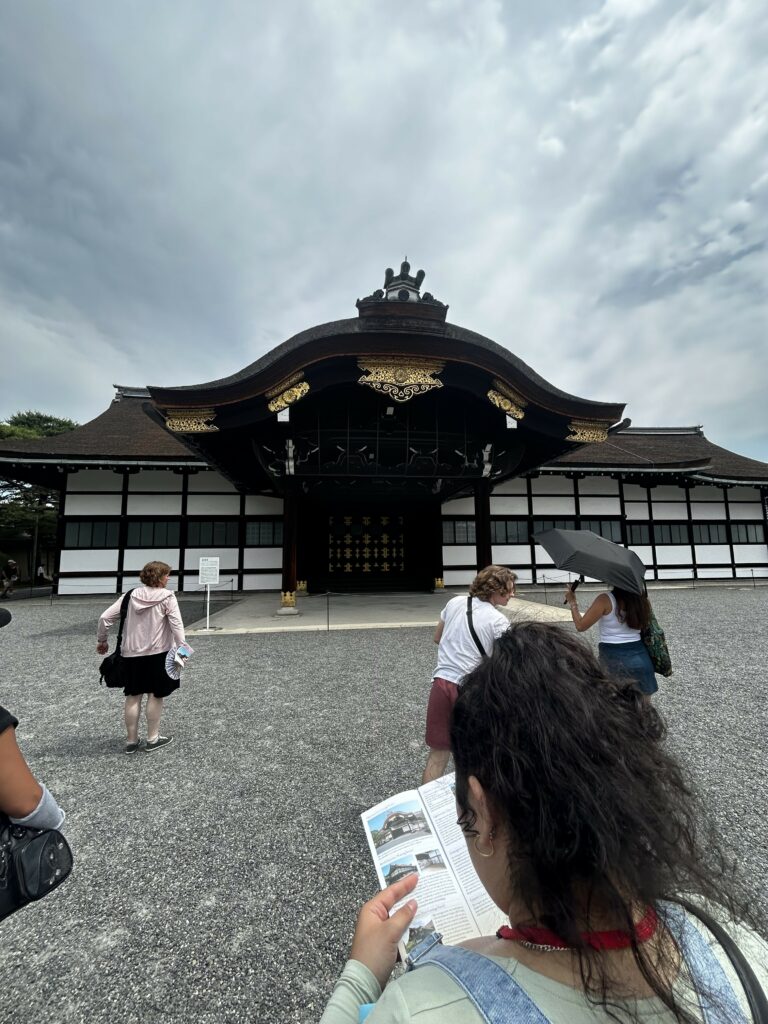
Located inside the Imperial Palace, Gonaitei (Inner Garden) represents the architectural and cultural design of the Heian Period. The elegant garden was exquisitely planned with the meandering stream spanned by earthen and stone bridges as well as lanterns and stones. Though the garden has a beautiful bridge, it is closed off to the public given the fact that it is a very old bridge and is fragile. In the Kyoto Imperial Palace, this garden is known to symbolize Japanese heritage and represents the history and tradition of Japan.
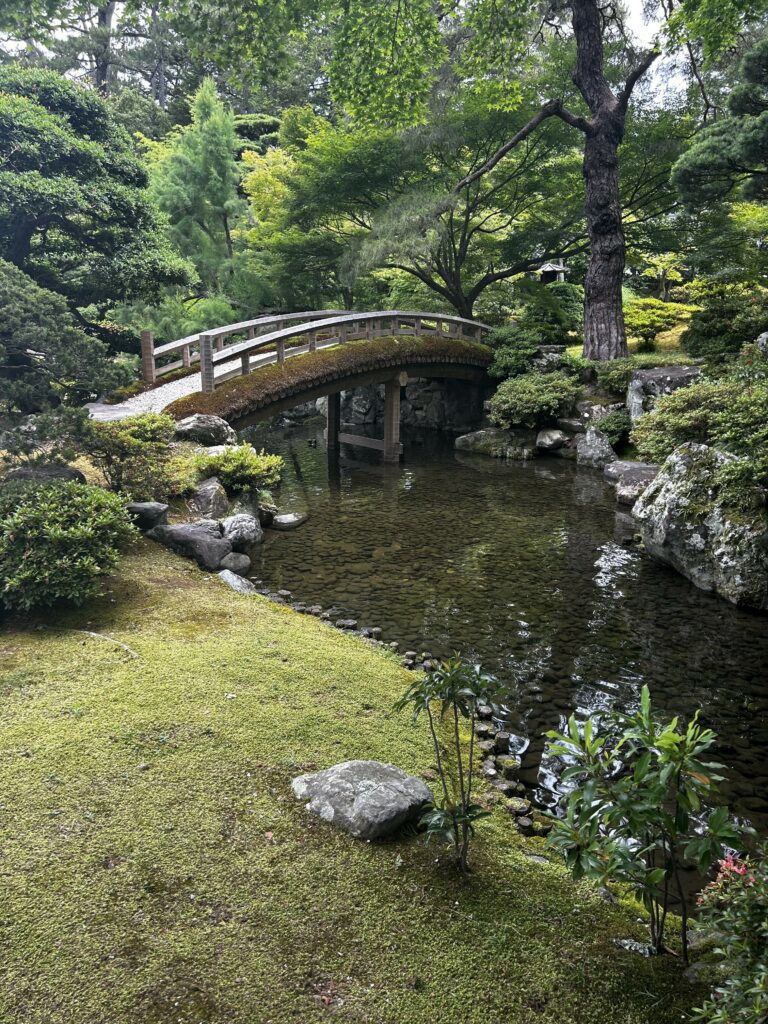
Celebrities who stayed in the Kyoto Imperial Palace
Our tour guide said that Queen Elizabeth ll once visited the Kyoto Imperial Palace in 1975 and even stayed in the emperor’s guest house, which of course was more modernized by that time. Queen Elizabeth ll visiting Kyoto was a significant time for the British monarch and Japanese royalty, which was able to strengthen the diplomatic relations between the United Kingdom and Japan.
Tips before entering the Kyoto Imperial Palace
Please be respectful when visiting the palace grounds.
Luckily, we did not run across this, but when you or your loved ones decide to visit this palace ,there are strict regulations you must follow during your tour such as no eating and no taking large group photos.
Also, be sure to not be loud or disruptive since this is a quiet place and others are trying to learn more about the palace.
While you are at the palace, it is advised to have a guided tour of the palace, especially if you are not too familiar with Japanese imperial history and would like to be engaged with the topics discussed. It will help you understand more about Japanese culture and more about the palace itself when it comes to certain buildings.
Overall, taking a tour of the Kyoto Imperial Palace is an experience you should take while in Kyoto. Though it is a lot of walking and depending on the day that you go, the weather can be either a nice cool day or painfully hot, so be advised and stay hydrated, bring a fan and a good pair of walking shoes.
The Kyoto Imperial Palace portrays so much history, and each building, the architecture, and art all tell a story that makes you feel as if you are part of the history. It will help you appreciate Japanese culture and have a better understanding of its history.
So if you get the chance, visit the Kyoto Imperial Palace because it truly is fascinating!







